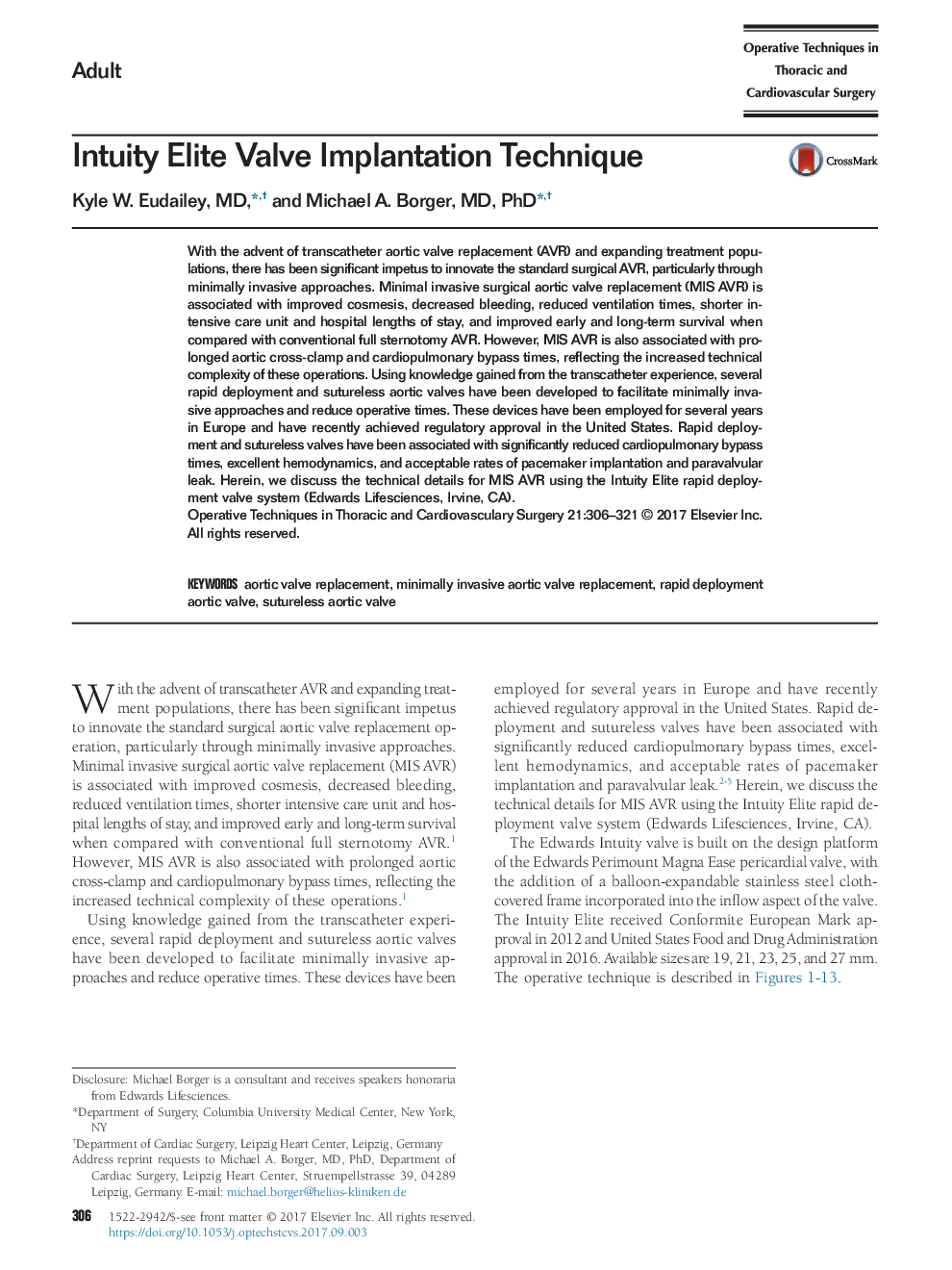| Article ID | Journal | Published Year | Pages | File Type |
|---|---|---|---|---|
| 8674839 | Operative Techniques in Thoracic and Cardiovascular Surgery | 2016 | 16 Pages |
Abstract
With the advent of transcatheter aortic valve replacement (AVR) and expanding treatment populations, there has been significant impetus to innovate the standard surgical AVR, particularly through minimally invasive approaches. Minimal invasive surgical aortic valve replacement (MIS AVR) is associated with improved cosmesis, decreased bleeding, reduced ventilation times, shorter intensive care unit and hospital lengths of stay, and improved early and long-term survival when compared with conventional full sternotomy AVR. However, MIS AVR is also associated with prolonged aortic cross-clamp and cardiopulmonary bypass times, reflecting the increased technical complexity of these operations. Using knowledge gained from the transcatheter experience, several rapid deployment and sutureless aortic valves have been developed to facilitate minimally invasive approaches and reduce operative times. These devices have been employed for several years in Europe and have recently achieved regulatory approval in the United States. Rapid deployment and sutureless valves have been associated with significantly reduced cardiopulmonary bypass times, excellent hemodynamics, and acceptable rates of pacemaker implantation and paravalvular leak. Herein, we discuss the technical details for MIS AVR using the Intuity Elite rapid deployment valve system (Edwards Lifesciences, Irvine, CA).
Related Topics
Health Sciences
Medicine and Dentistry
Cardiology and Cardiovascular Medicine
Authors
Kyle W. MD, Michael A. MD, PhD,
